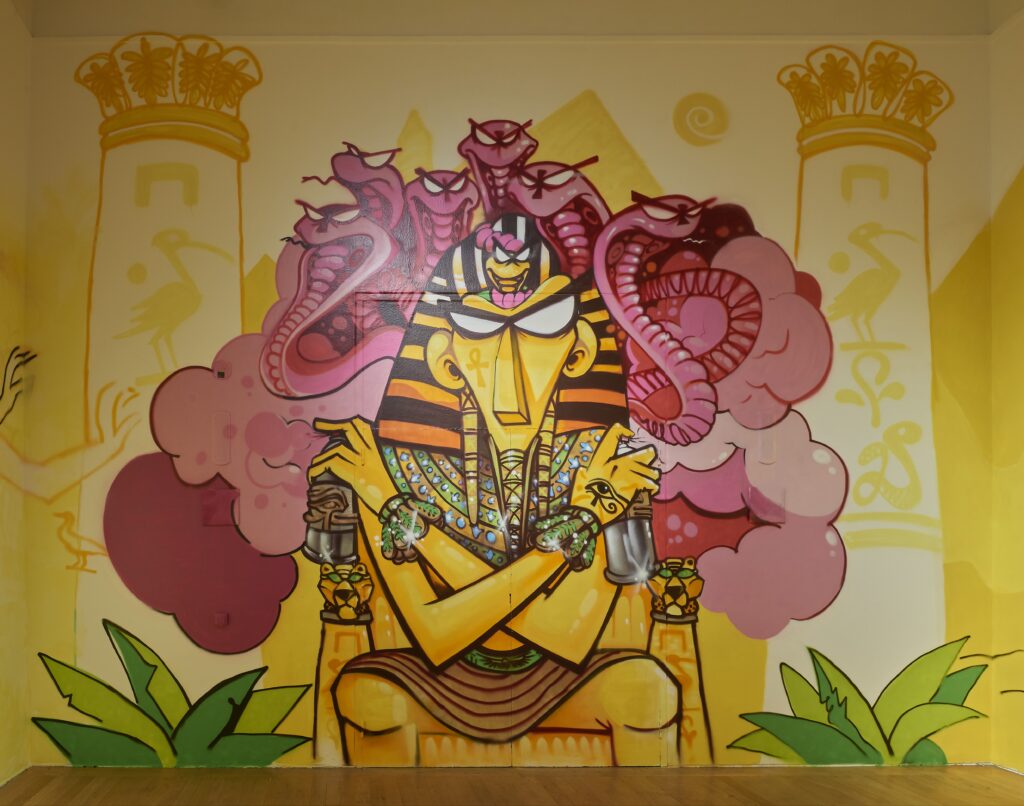Tutankhamun reimagined; a global co-curation project
Written by Claire Messenger, Manager, International Training Programme
Throughout 2022 we were delighted to work with Heba Khairy, Exhibition Coordinator, The Grand Egyptian Museum (Egypt, ITP Fellow 2017) and colleagues in the Department of Egypt and Sudan on a co-curated project at the British Museum.
The project aimed to commemorate the centenary of the discovery of the tomb of Tutankhamun (opened in November 1922) and Heba’s participation ensured a new and creative perspective would be central to the exhibition and display.
As Heba said….’the fact that I am Egyptian and working within the cultural heritage sector in Egypt, I believe that I have offered new ideas and approaches regarding what the King Tutankhamun Collection represents to contemporary Egyptians, giving a deep knowledge of their passion and curiosity about Tutankhamun’s hidden knowledge, stories and theories.’
The exhibition, Tutankhamun: reimagined, in the Asahi Shimbun display in Room 3 from 1 December 2022 – 29 January 2023, explored both ancient and modern Egyptian relationships with the image of Tutankhamun, by placing both ancient and contemporary objects alongside each other. Tutankhamun is, for many, a powerful symbol of Egyptian identity and a source of artistic inspiration so the British Museum commissioned work by Egyptian graffiti artist Nofal O, a connection made possible by Heba, to mark this centenary.

Heba was also able to create a small display in Room 4, the Egyptian Sculpture Gallery, through objects from the Museum’s collection and new objects she purchased specifically to illustrate the theme of the display. The display forms the last stop on a short Tutankhamun trail which focusses on the political and religious background of Tutankhamun’s reign. The theme of the case is the ‘legacy’ of Tutankhamun and how he is viewed by Egyptians today.

Heba and the ITP team were keen to ensure there was a legacy and the potential for learning and skill-sharing outcomes to this project. So Heba has created a wonderful and insightful ‘toolkit’ for those wanted to know more about co-curation. The toolkit looks at what co-curation means, shares tips for successful co-curation, addresses some of the main challenges and focusses in on her ES/ITP case study.
You can view the toolkit here.
The ITP team have also worked to ensure the longevity of the project and created a webpage to celebrate the hard work and creativity that went into delivering the projects substantial outcomes. On the webpage – https://www.bmitpglobalnetwork.org/about-us/itp-legacy-projects/tutankhamun/ – as well as hearing from Heba, you can find the following:-
- The text from the Tutankhamun: reimagined Asahi Shimbun display.
- A series of interviews, developed and delivered by Heba, speaking to local people in Luxor, Egypt, about how they think Tutankhamun is perceived by Egyptians today.
- An interview with Ahmed Nofal, Nofal O, talking about his artistic inspiration and a time-lapse of him creating his artwork in Room 3.
- The Room 4, Egyptian Sculpture Gallery, trail, Tutankhamun; ancient and modern perspectives.
We would like to thank Heba for bringing her experience, her creativity……and her patience……to the project. Working with her online and here at the British Museum was a delight and the hard work and local knowledge she brought to the displays and trail, made for a wonderful outcome. Congratulations Heba!!!!
